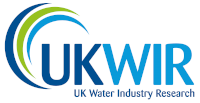Focus on Wastewater
21/02/2022
UKWIR’s Big Question 5 – How will we deliver an environmentally sustainable wastewater service that meets customer and regulator expectations by 2050? and Big Question 6 – How do we achieve zero uncontrolled discharges from sewers by 2050? are delivering important research to support this step-change in performance.
How can conventional wastewater treatment processes cope with greater volumes of weaker sewage?
This project examined how existing wastewater processes can cope with larger volumes of more dilute sewage due to the impacts of climate change and reduced use of combined sewer overflows.
The project aimed to provide the water industry with a clearer understanding of the real impacts, risks, and challenges associated with current proposals to reduce or remove intermittent spills from wastewater networks through the closure of CSO’s.
The project explored for conventional treatment works to cope with changing demands, the risks (both compliance and cost), cost-effective options for effective treatment – all to enable the industry to manage variable flows.
How to apportion pollution load especially chemicals of emerging concern?
This project assessed existing data about urban run-off and atmospheric deposition to enhance the Source Appointment Geographical Information System (SAGIS) water companies use to support their investment decisions.
Its objectives were to improve understanding of atmospheric deposition to soils, better identify sources of pollution in urban areas and identify possible interventions at the source of pollution rather than at wastewater treatment works.
The research could help companies avoid unnecessary expenditure and help them plan their assets and operations more effectively.
Upgrading UKWIR’s Source Apportionment GIS (SAGIS) Model
SAGIS is used by water companies to better plan their operations, asset management and investment decisions.
This project updated SAGIS’ code to new programming languages and migrated it to a new platform to remove the risk of data becoming out of date, ensure compliance with current and future systems and added a modular functionality to support future code developments. The report is available on our website – reference number 21/WW/02/14.
Effluent disinfection – what is the cost?
With the increased demand for inland bathing waters, this project sought to understand the potential national monetary and carbon costs in different scenarios for disinfecting continuous and intermittent effluent discharges.
The project team reviewed existing research and case studies, captured regulatory assumptions of costs and other criteria and then presented a range of scenarios and their associated financial and carbon impacts.
This work will support UKWIR and its members to inform and influence decision makers and help ensure changes to the inland bathing waters designations, and regulatory requirements, are proportionate to the environmental benefits they deliver.
PFAS and wastewater – prevalence, reduction options and costs
Per and polyfluoroalkyl substances (PFAS) are a group of over 4,700 synthetic compounds that have been used extensively for a wide variety of industrial and commercial applications – and have been labelled “forever chemicals” due to their persistence in the environment.
Firstly, a comparative assessment of what is known about PFAS in rivers, effluent, sludge and potable water in the UK and Ireland was undertaken. This was followed by a review of treatment options – including an estimate of costs, benefits and the carbon and climate change impacts.
The project found further research is needed to fully understand the prevalence of PFAS and that controlling these pollutants at source is the most important way of mitigating their risk. The report is available on our website – reference number 22/WW/14/2.
